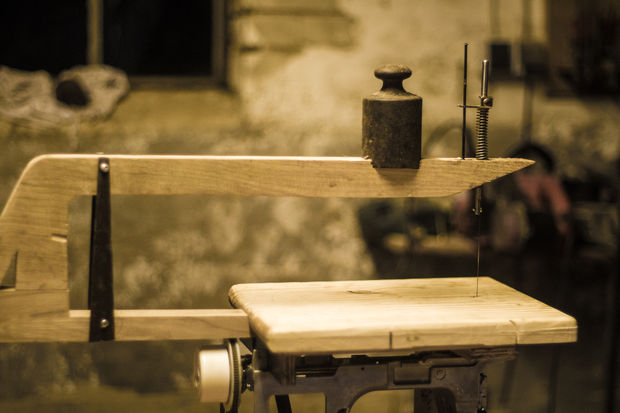Scroll saws are super handy tools, but it’s sometimes hard to justify buying one for a single project. So why not make it your project? [SDX42] shows us how, using a…wait a second, is that an old sewing machine?
First a little back story. He picked up an old sewing machine that had been thrown out by its previous owner: they said it didn’t work right. He took it anyway and decided to fix it up. He encountered two problems. First, it turned out to be a lot harder to fix than he first imagined. Second, he realized he had no use for a sewing machine. What he did need, however, was a scroll saw.
A sewing machine is actually fairly similar to a scroll saw. They both work by converting rotary movement into linear reciprocation. The only difference is the layout. [SDX42] flipped the mechanism upside down and built a scroll saw frame on top of the stripped-down sewing machine. It’s a bit more complicated than that, but we’ll let him explain it to you in the video after the break.
[via Go Repairs]
















A scroll saw uses two parallel arms, holding the blade in tension. Here’s an example of a DIY build http://www.instructables.com/id/Make-a-scroll-saw-using-only-upcycledfree-mater/ and another http://lumberjocks.com/projects/64795
I have an ancient, tiny scroll saw that’s just like his. One arm of spring steel on top, with the other end of the blade attached to the motor (which is some sort of electromagnetic vibrator)
Interesting to see that throughout the history of the scroll saw that the technicality of it hasn’t changed.
I acknowledge what Galane wrote…
But I wonder if it couldn’t be stronger by using the original overhead arm of the sewing machine (often they are cast iron).
I would change two things on the arm. First, the arm should be made of plywood – europeans can easily get 18mm (3/4″) hardwood (birch) plywood made of 1mm sheets. Second, he made the arm of uniform thickness. I would make the arm much thicker at the base and thinner at the point. That would eliminate the vertical oscillations. He might also have horizontal oscillation issues. These can be resolved by sandwiching an additional piece of plywood on the sides of the base, reaching to about the halfway point on the arm.
Wouldn’t it have easier to take out the “e” and put in an “a”?
Yes, yes it would!
cheap scrollsaws are generally noisy, the design is reasonably sound, a lot of vibration is removed by the sheer weight of the unit + bolting it to a solid work surface. Looking at the way the blade is moving around, it seems like it needs more tension on the blade but the state of the top of that arm suggests that it’ll break before it gets tight enough.
The beauty of a sewing machine build should in theory be the ability to change the speed that it cuts, which means he should be able to vary the blade types that are used so should cover more material types and make them easier to cut.
All in all, a really nice build, now laminate some pieces of wood and make me a bowl!!
Second, he realized he had no use for a sewing machine.
We have all been there.
Sometimes I wish I had a sewing machine. I have a Speedy Stitcher Sewing Awl I use from time to time.
“Speedy Stitcher Sewing Awl”
Not a clue what that looks like, but I want one…. It sounds cool.
Google images provides a nice overview. This is close to what I have
http://toolmonger.com/wp-content/uploads/2007/07/speedystitcher.jpg
I have the kit with the extra spool of thread so the box is about twice the size. Same design artwork though.
From the way it makes the work piece jump up and down I wonder if he’s got the blade in upside down. It should cut on the downstroke but I can’t tell if thats the way he’s got it.
looks like a recipe more for “DIY maiming” rather than anything else…….